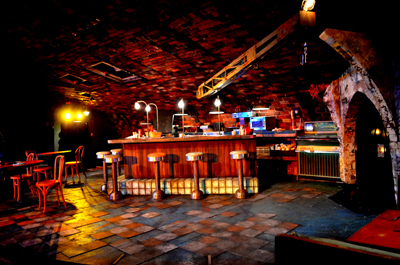A theatre student at Fredonia has earned recognition from a national organization for his design work on two Walter Gloor Mainstage Series productions this season.
Chad Healy, a senior B.F.A. Theatre Production and Design major, was awarded first place in the undergraduate division at the Southeastern Theatre Conference for his scenic design of “Balm in Gilead.” The production was stage from Feb. 27 to March 7 in Bartlett Theatre on the Fredonia campus as part of the theatre department’s Walter Gloor Mainstage Series.
Healy also earned honorable mention at the conference for his costume design for the Mainstage production of “It’s a Wonderful Life – The Radio Play,” which was staged from Dec. 5 to 13, also in Bartlett Theatre.
David Stellhorn, head of Theatrical Production and Design at Fredonia, said the conference had entries from colleges and university from more than14 states.
“Design entries were submitted only with a primary faculty member’s nomination,” Stellhorn said. “Since Chad’s design work was extraordinary, Dixon (Reynolds, associate professor of Costume Design) and I nominated him in our area.” At the undergraduate level, Stellhorn said there were 24 scenic design and 21 costume design entries. “The pool was narrowed to 11 and eight, respectively, by the professional designers serving as adjudicators,” he explained. “These students were then called to publicly discuss their design process with the adjudicators. From there, the winners were determined. The adjudicators all have significant professional credits on Broadway and beyond.”
Theatre professor James Ivey, who directed “Balm in Gilead,” said Healy’s set design was one of the highlights of the production. Ivey called it a “richly detailed and visually dense scenic environment” that was “a perfect complement to the many layers of the dramatic storyline.”
A gritty urban drama by Lanford Wilson, a Pulitzer Prize winning American writer, “Balm in Gilead” centers primarily on the relationship between a small-time drug dealer and a naive new arrival to New York City’s upper west side. In describing his inspiration for the design, Healy said he wanted the set to capture the dark and twisted world in which the characters were living. “One of my driving forces for the design to take things familiar to all of us and then contort them into something not pleasant,” he said. “When we see the tile on the floor torn up, we associate it with something dingy.”
“It’s a Wonderful Life – The Radio Play,” was set on Christmas Eve in 1949 and followed the events at radio station KPNF during a live broadcast of “It’s A Wonderful Life.”
In a review published in the Jamestown Post Journal, critic Robert Pyler noted that “Chad Healy’s costumes looked like clothes, not like Halloween costumes, and that made the performance all the easier to believe.”
The Southeastern Theatre Conference annual convention is attended by more than 4,200 students, faculty and industry professionals every year. It provides a job fair for actors, designers and technicians with more than 80 professional theatre companies from across the United States in attendance. There is also a technical exposition with more than 40 industry professionals demonstrating state of the art technical equipment and products. This year, Stellhorn noted there were 400 workshops covering all aspects of theatre.




